Visions of a Future Beyond Capitalism
35+ Revolutionary Films to Watch While Under Quarantine
by Jordan Flaherty
For your May Day weekend…and the rest of quarantine: Film recommendations from Jordan Flaherty, author of No More Heroes: Grassroots Challenges to the Savior Mentality. See more from Jordan at jordanflaherty.org and his writings on film and more at Medium.com.
In this time of pandemic and quarantine, there is power in exploring the ways that past generations have confronted rising tides of fascism and crisis. For 100 years, communists, socialists, anarchists, anti-colonialists, and other revolutionaries have made films that attempt to intervene in their moment, to not just tell stories, but lift up silenced voices and imagine better futures. Together, they form an underground history of the 20th and 21st centuries. The films in this list were made by radical and visionary artists; many of them wanted to both overthrow capitalism and transform cinema.
Many on this list ride the border between documentary and fiction, lifting up real people and stories. Often these films cast activists instead of professional actors, with people engaged in social movements playing some version of themselves — even in the science fiction films. These filmmakers also avoid traditional storytelling cliches. Instead of a single protagonists’ “hero’s journey”, they focus on mass movements, showing history shaped by collective effort. In this way, their structure challenges the so-called “Great Man Theory of History”, showing that change is made by community, and all of our stories and fates are interconnected. Seeking a revolutionary process, some of the films are made collectively as well, avoiding a single auteur.
If you see any of these and want more, I’ve also included “further viewing,” additional films by the same filmmaker, or along similar themes.
Together this list spans nearly a hundred years of filmmaking, from 1925 to 2019, on six continents. Even so, this is far from an exhaustive list of every radical film ever made. But it does include films that changed my life. Please add your favorites that I missed in the comments.
Many of these films are accessible for free online, through the Kanopy streaming platform (which offers an incredible line-up of free movies for many library card holders), as well as on youtube, archive.org, vimeo, and other free or mostly free sites. You can also find many of these films, and other brilliant work, on the Criterion streaming site.
Check out my lists of best social justice films from 2019, 2018, 2017, 2016, 2015, 2014, 2013, 2012, and earlier.
35+ Revolutionary Films

1. Battle of Algiers — A favorite film of revolutionaries from Black Panthers to Irish Republican Army members to Palestinian freedom fighters, The Battle of Algiers is a classic of anti-colonialist cinema. Filmed in a style that deliberately blurs the boundaries of fiction and documentary, the film was written by Saadi Yacef, a leader of Algeria’s National Liberation Front (FLN), and shows that a colonial occupation cannot last, and repression breeds resistance. Yacef and at least one other former FLN member also act in the film. In addition, Jean Martin, who plays a French counterinsurgency officer, was a military veteran who had been outspoken in support of the Algierian freedom struggle. A member of the antifascist resistance in Italy during World War 2, Marxist director Gillo Pontecorvo made several other anti-colonialist films.
Further Viewing: Iranian filmmaker Mohsen Makhmalbaf was a revolutionary teenager, imprisoned under the Shah for stabbing a police officer. The Islamic revolution released him from prison and made him a filmmaker. He later became critical of the Iranian clerics leading the country, defining himself as an existentialist and a feminist, and his 1996 film A Moment of Innocence is a critical reconstruction of his own youth, looking back at his own actions with the perspective of twenty years later, and in cooperation with the policeman he stabbed.

2. Born in Flames — Lizzie Borden’s first film, released in 1983, takes place in a near future under a democratic socialist government in the United States. The film follows militant cells of women, mostly lesbians and women of color, who find that the new socialist government has not addressed the problems of patriarchy and racism, and decide to form a women’s army to struggle for an intersectional revolution within the socialist revolution. Nearly forty years later, Born in Flames still feels bold and visionary. The characters in the film embrace a class and race-conscious revolutionary feminism inspired by the Combahee River Collective.
Further Viewing: Borden’s second film, 1986’s Working Girls, is a vérité–style fictional look inside the life of women working in a Manhattan brothel. It still stands today as one of the most non-sensational filmed depictions of sex work.

3. Land and Freedom — The Spanish Civil War is a key moment in revolutionary history. Idealistic revolutionaries from around the world risked their lives to travel to Spain to join with anarchist, socialist and communist militias to fight fascism. British socialist director Ken Loach’s 1995 film, loosely inspired by George Orwell’s Homage to Catalonia, is the best film about this period, a moving portrayal of liberatory spirit, based in the form and ideas of social realist cinema. A central scene in the film features villagers and militia members discussing whether or not collectivise their land. Land and Freedom immerses the viewer in a discussion that most films would avoid, showing how political differences can have deep implications. As an example of the films’ realist style, the scene features local residents of the village playing themselves, speaking their own beliefs.
Further Viewing: Loach has directed 24 features about the lives and struggles of the working class, including last year’s powerful Sorry We Missed You, about the lives of gig economy workers.

4. Punishment Park — Peter Watkins’ dystopian science fiction film was made in 1971, but still feels fresh and relevant today. In a near future, dissidents and activists are rounded up, imprisoned and sentenced to a mysterious “punishment park.” The prisoners trying to survive divide into groups along the political spectrum from militant to pacifist, and their differing politics lead them to different strategies for survival. The cast is made up of actual anti-war protestors, activists, and former prisoners, who draw upon their own views, experiences and ideas to create the mostly-improvised dialogue.
Further Viewing: Filmmaker Peter Watkins continued to experiment and explore revolution throughout his career. His 2000 film La Commune (Paris 1871) is anarchist, experimental and totally unique.
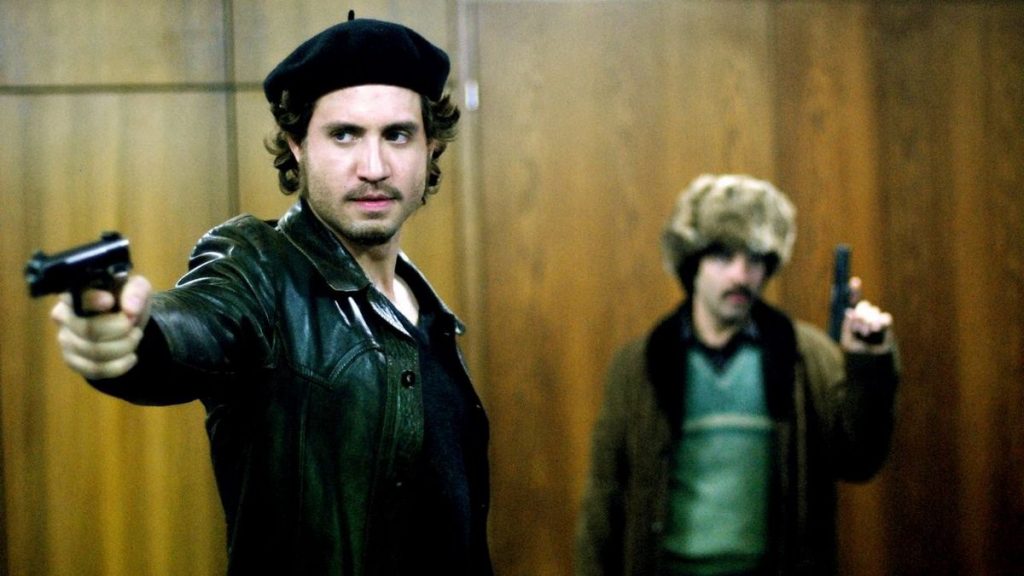
5. Carlos — Ilich Ramírez Sánchez — better known as Carlos the Jackal, had a life that brought him in contact with many of the key leftist armed movements of the 70’s, from Popular Front for the Liberation of Palestine, to Japanese Red Army, to German Revolutionary cells. At 339 minutes, Olivier Assayas’s 2010 film (which is critical of Sánchez but refuses easy answers) is perfect for quarantine viewing, and an incredible snapshot of an era of transcontinental armed struggle.
Further Viewing: Check outAssayas’s 2012 film Something in the Air, a drama set among students in the aftermath of the 1968 riots in Paris.
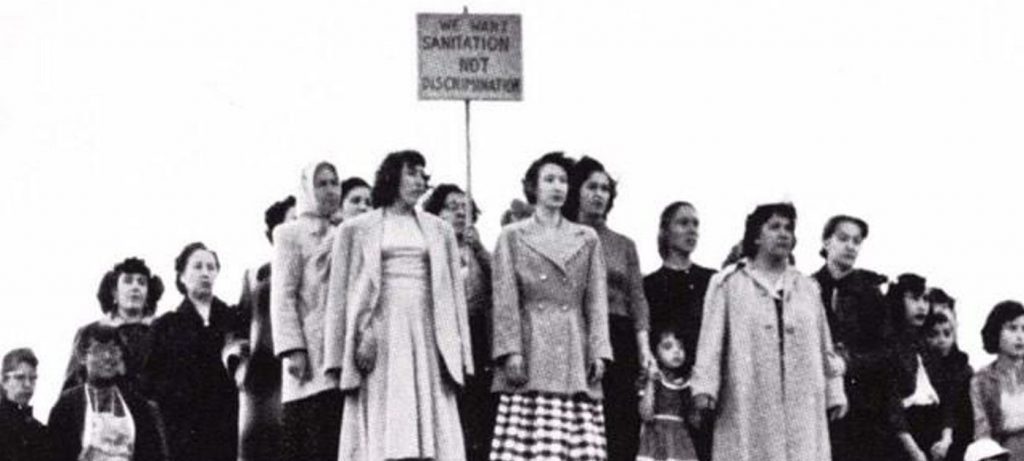
6. Salt of The Earth — Made in 1954 as a collaboration between blacklisted Hollywood filmmakers and radical Latinx trade unionists, Salt of the Earth wears its radical politics proudly. The filmmakers had been blacklisted by Hollywood (and in the case of director Herbert J. Biberman, imprisoned for refusing to cooperate with Congressional investigations of Communists), while the union had been forced out of the CIO labor federation for their radicalism (They were part of the Western Federation of Miners, which had been part of the anarchist Industrial Workers of the World). Based on the true story of a 1951 strike, most of the cast are strikers and their families, playing themselves.
Further Viewing: Actress and director Lee Grant made The Willmar 8 in 1981, a documentary about a group of women bank employees on strike in Minnesota, challenging sexism from their employer and from the labor movement.
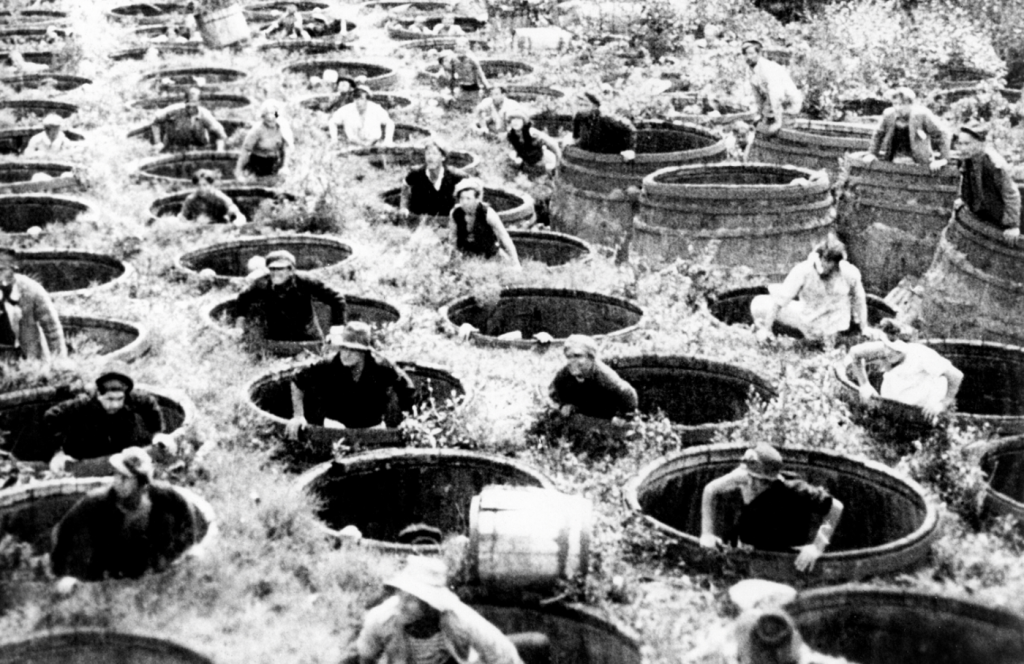
7. Strike — Sergei Eisenstein’s classic film depicts a 1903 uprising by factory workers, seen as the beginnings of the mass resistance that led to the 1917 Soviet revolution. Made in 1925, just a few years after the revolution, and starring actors from a revolutionary theater company, the film is less history than it is a celebration of popular resistance. A hundred years later, Eisenstein’s use of montage techniques can still be felt in films today, including several on this list that are directly inspired by Strike.
Further Viewing: Eisenstein’s follow-up films Battleship Potemkin and October are also classics.

8. Hour of the Furnaces — A cinematic descendent of Strike and precursor to other films on this list, Hour of the Furnaces was made illegally and in secret in 1968 as an organizing tool to challenge not only the Argentinian dictatorship, but capitalism, colonialism and neoliberalism. The film was made by Octavio Getino and Fernando Solanas, working under the name The Cine Liberación Group. Nicole Brenez writes, “The film was made clandestinely under a dictatorship… Each screening was a risk and created a ‘liberated space, a decolonised territory’ (in Getino’s words), within which the film could be stopped for as long as necessary to allow discussions and debates (hence the compartmentalised structure). Argentinian scholar Mariano Mestman recalls that several screenings lead to military confrontations. To attend a screening was in itself a political act, transforming spectators into responsible historical subjects, not because they did or did not agree with the content of the film, but by virtue of the very decision to attend, despite the threat.”
Further Viewing: You can see the influence of Hour of The Furnaces throughout revolutionary cinema, especially in Latin America. One close descendent is Patricio Guzman’s 1973 The Battle of Chile, about the overthrow of the government of Salvador Allende. A more modern descendant, 2004’s The Take, directed by Avi Lewis and Naomi Klein, shows that the factory takeovers depicted in Hour of The Furnaces have not stopped.
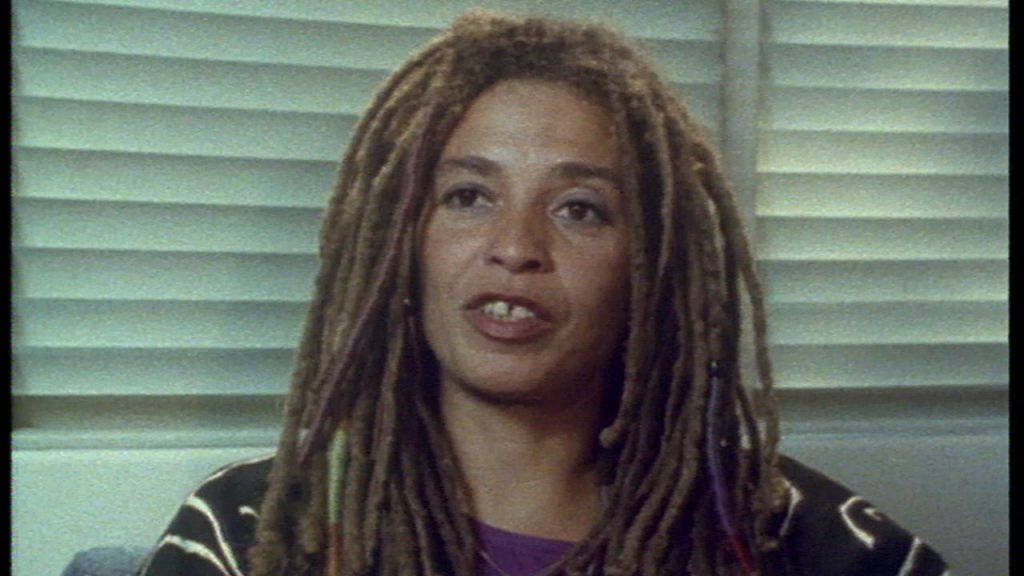
9. A Place of Rage — Did you know that there is a film featuring extended interviews with Angela Davis, June Jordan, and Alice Walker, with music by Prince and Janet Jackson? Pratibha Parmar’s 1991 feminist documentary challenges racism, homophobia, and capitalism, with intimate touches like Angela Davis playing squash and jogging.
Further Viewing: Released the same year, Julie Dash’s Daughters of the Dust is the first feature film directed by an African-American woman to be distributed theatrically in the United States, and is a Black feminist classic, partially inspired by the work of Alice Walker.
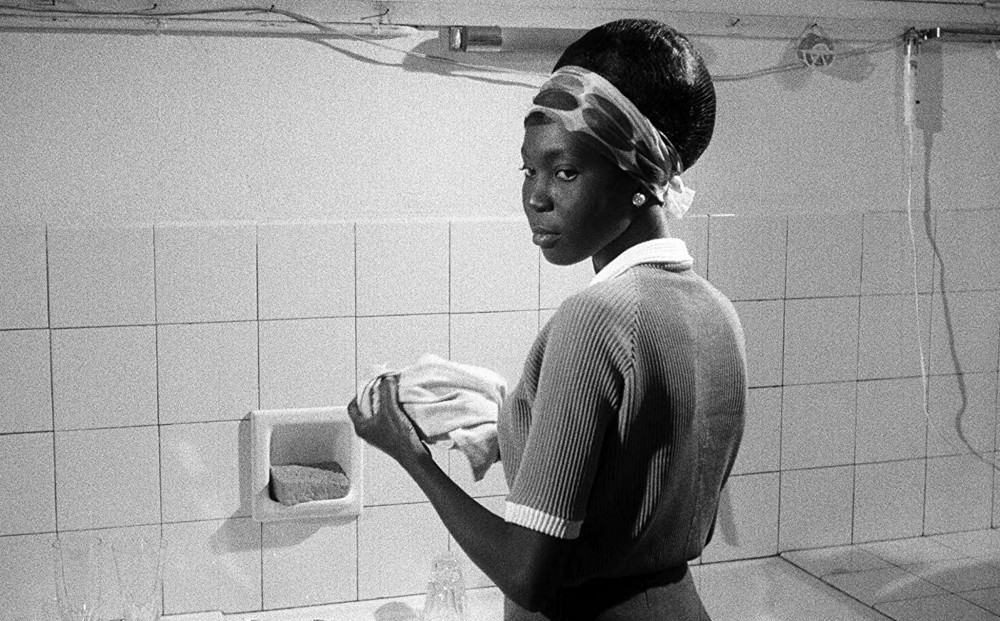
10. Black Girl — European colonialism and patriarchy is personalized inOusmane Sembène’s 1966 experimental drama about a young Senegalese woman working as a maid for a wealthy French couple. Born in Senegal, Sembène was a novelist and filmmaker, a communist and a feminist. As a young man in France, he helped lead a strike by the communist-led CGT union to hinder the shipment of weapons for the French colonial war in Vietnam.
Further Viewing: Sembène’s Moolaadé is another attack on patriarchy, this time focusing on female genital mutilation.

11. When I Saw You — A child, displaced along with his mother from Palestine in 1967, runs from a refugee camp and finds himself among armed resistance fighters. Released in 2012, Annemarie Jacir‘s moving film offers a child’s eye view of anti-colonialist struggle.
Further Viewing: Jacir’s Salt of this Sea is a poetic drama about a robbery — what is a robbery on stolen land? — starring Tony-award winning poet Suheir Hammad.
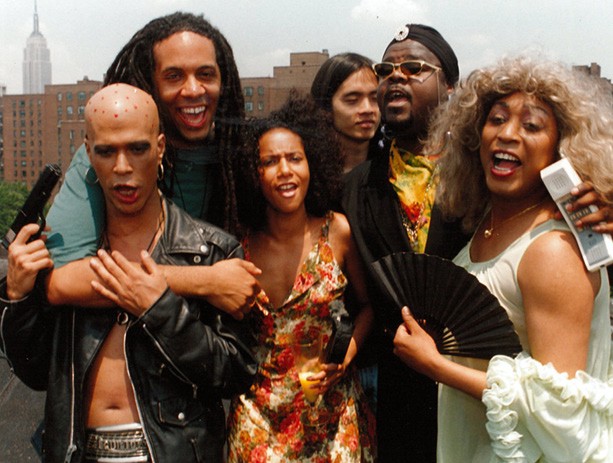
12. Chocolate Babies — Released in 1996, Stephen Winter’s Chocolate Babies is a groundbreaking and hilarious over the top comedy/drama about a group of HIV+ genderqueer activists of color that kidnap a politician. The film is the best depiction I’ve seen of the joy and discomfort of activist meetings, and is set firmly in the gay and queer Black subcultures of the 90s. Scenes like the one on the Christopher Street Piers at sunset capture an important moment in LGBTQ history. (Disclaimer: I worked as a crew member on this film, though I can take no credit for any of what makes it brilliant).
Further Viewing: Stephen Winter’s 2015 drama comedy fantasy Jason and Shirley is a subversive re-imagining of Shirley Clarke’s 1967 queer cinema classic documentary Portrait of Jason.

13. Bamako — Malian director Abderrahmane Sissako’s funny, poetic, surreal, and completely original 2006 film puts the International Monetary Fund, World Bank, and neoliberalism on trial in an anti-colonialist satire.
Further Viewing: Take some time to explore the rich history of West African anti-colonialist filmmaking, including Djibril Diop Mambéty’s Hyenas and Touki Bouki, Mati Diop’s Atlantics, and Sissako’s Timbuktu.
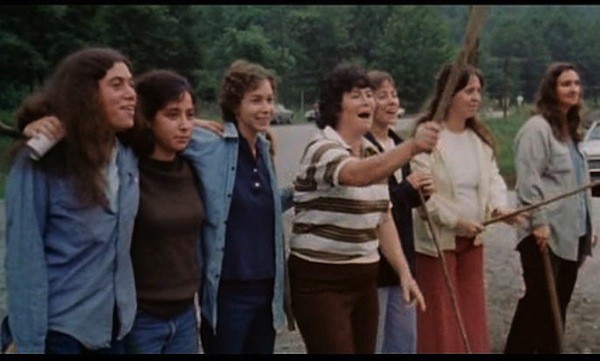
14. Harlan County, USA — A suspenseful documentary that shows the power of collective struggle to radicalize and empower. Director Barbara Kopple and her co-filmmakers spent a year and half living with the families of Harlan County, documenting their lives and strength in this 1976 Academy Award-winning documentary about striking coal miners. They were nearly killed by armed gunmen working for the company.
Further Viewing: Kopple has made dozens of documentaries, including films about Sharon Jones and the Dixie Chicks, and American Dream, which is an excellent, but more cynical, documentary about another major labor movement strike. Or, if you like uplifting films about inter-movement solidarity and class struggle, watch Matthew Warchus’ Pride (2014). A moving, funny, charming, delightful film based on a true story of gay activists in the 80s that built an alliance with striking miners in Thatcher’s Britain.

15. Sorry to Bother You — Musician/activist/filmmaker Boots Riley blends science fiction, satire, and social commentary in this 2018 film that is already a classic. Like Riley’s music, Sorry to Bother You wears its revolutionary anticapitalist politics on its sleeve but lures you in with sly humor and an outrageous premise, all while building the case that revolution is the only solution. The film would be worth seeing just for the design, from Tessa Thompson’s outfits and earrings to the fully imagined future.
Further Viewing: For more dystopian revolutionary science fiction, see Alex Rivera’s Sleep Dealer (2008) where future technology is used to further exploit immigrants. Also, Riley appears briefly in the fun agitprop webseries The North Pole, produced by Movement Generation, and In Prison My Whole Life, a 2007 documentary about political prisoner Mumia Abu-Jamal.
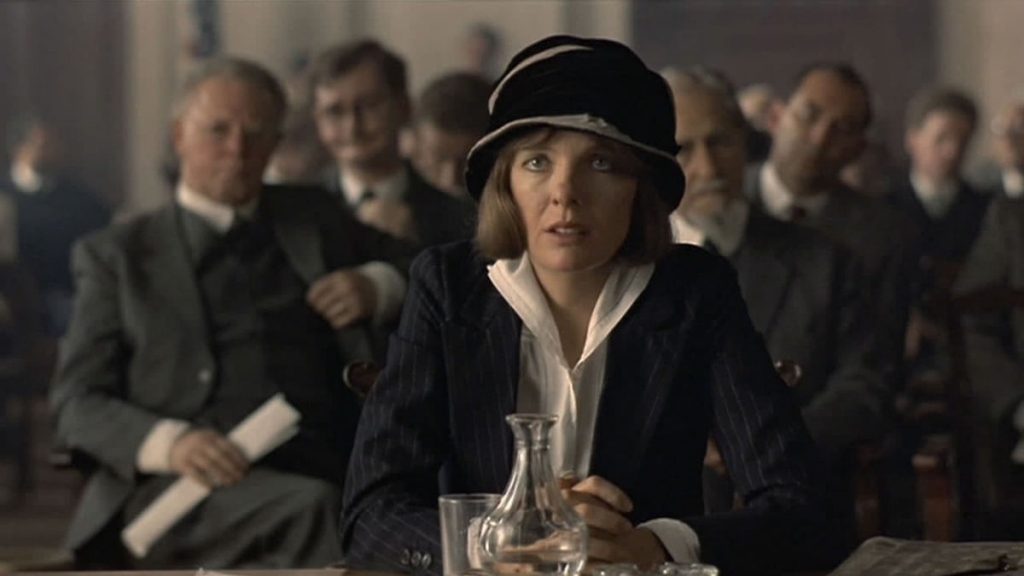
16. Reds — It’s hard to imagine something like Warren Beatty’s Reds (1981) coming out today. It was made in a brief window in which Hollywood would fund an epic film about the lives of US communists and anarchists in the years before and after the Russian Revolution — and later nominate it for 12 Academy Awards. Beatty stars along with Diane Keaton and Jack Nicholson in this big budget epic spanning several continents. The central love story between real life communist journalists John Reed and Louise Bryant, who traveled together to Russia during the Soviet revolution of 1917, is the least interesting part of Reds (and also completely hides Bryant’s queer identity). But the central characters are surrounded by anarchists and communists like Emma Goldman and trade union leader Big Bill Haywood, and the film makes use of real-life interviews with “witnesses” that were contemporaries of Reed and Bryant, including radicals Scott Nearing and Roger Baldwin, author Henry Miller, and dozens of others.
Further Viewing: The years after the Soviet revolution (and before Stalin consolidated power) saw a flowering of artistic output. In addition to the films of Eisenstein mentioned above, Dziga Vertov’s Man With a Movie Camera is another early Soviet artistic triumph. Or, for another Hollywood film with leftist content, check out Sidney Lumet’s 1976 Network, a satire of media that predicted Fox News and reality TV.
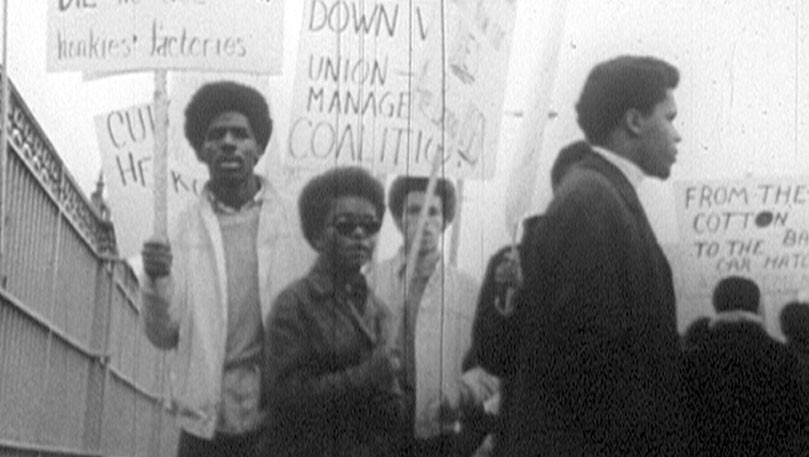
17. Finally Got the News — Formed in 1968 in Detroit, the League of Revolutionary Black Workers were a revolutionary organization that fought simultaneously against their bosses at the big auto companies and racist leadership of the United Auto Workers, as well as organizing against capitalism and white supremacy in society at large. The league saw media as a crucial part of their work, starting a newspaper (student members of the league actually took over the student paper at Wayne State University), and working in collaboration with Stewart Bird, Rene Lichtman and Peter Gessner, members of the New York Newsreel film collective (later to become Third World Newsreel).
Further Viewing: Founded over fifty years ago, Third World Newsreel created and/or distributed a wide range of revolutionary content, all of which can be purchased on their site.
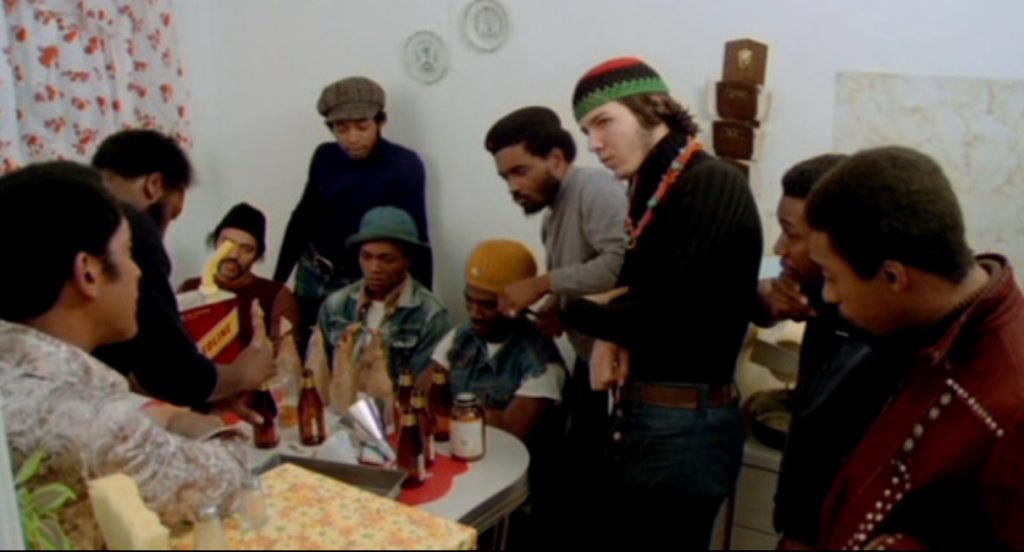
18. The Spook Who Sat By The Door — Ivan Dixon’s classic 1973 adaptation of Sam Greenlee’s 1969 novel about a disillusioned Black former CIA agent who uses his skills to train gang members to become guerrillas and foment revolution in the US. Come for the satire, stay for the step-by-step guide guerrilla warfare. It’s no surprise that revolutionary hip-hop group Dead Prez sampled the movie on their song We Want Freedom 27 years later.
Further viewing: Infiltrating Hollywood: The Rise and Fall of the Spook Who Sat by the Door, a documentary about the struggle to make the film, including attempts by the FBI to stop the film from being seen.

19. Anarchist from Colony — The true story of early 20th century Korean and Japanese anarchists fighting Japanese colonialism in Korea, Lee Joon-ik’s inspiring historical epic Anarchist from Colony was a box office hit in Korea when it was released in 2017.
Further Viewing: This is not the only film about early twentieth century Korean anarchists seeking to overthrow Japanese occupation. Park Chan-wook, director of Oldboy and The Handmaiden, wrote the action film Anarchists, produced by Lee Joon-ik, directed by Yoo Young-sik, and released in 2000.

20. Palante, Siempre, Palante — Iris Morales, the first woman member of the Young Lords, directed Palante, Siempre, Palante in 1996. The film is an indispensable history of the Young Lords and their programs like free breakfast, healthcare, and political education.
Further Viewing: El Pueblo Se Levanta (The People Are Rising),a 1971 Newsreel film about the Young Lords. To see another documentary made from within a revolutionary movement, see Sanjay Kak’s 2013 documentary Red Ant Dream, filmed within the revolutionary Maoist movement in India.

21. Soy Cuba — Made in 1964, in the early days of the Cuban revolution, Mikhail Kalatozov’ Soy Cuba (also known as I Am Cuba) is a celebration of Cuba and a triumph of filmmaking (One incredible shot inspired a sequence in the 1997 Paul Thomas Anderson film Boogie Nights, and Francis Ford Coppola and Martin Scorsese helped with the films’ restoration and re-release). The film is narrated by a voice that represents Cuba as a nation and people, and tells the stories of Cuban people struggling under western imperialism and finally rising up.
Further Viewing: Tomás Gutiérrez Alea’s 1968 film Memories of Underdevelopment is a fascinating view of post-revolution Cuba, by a Cuban director.

22. Lumumba — Anti-colonialist Haitian filmmaker Raoul Peck’s 2000 film explores the life and murder of revolutionary Congolese leader Patrice Lumumba, the CIA’s role in his killing, and the subsequent devastation of his country.
Further Viewing: Peck has made 15 feature-length radical films, with more on the way. I Am Not Your Negro, his 2016 film about the ideas of James Baldwin, is among his best.

23. United in Anger — In this moment of healthcare crisis, we need Jim Hubbard’s 2012 grassroots history of ACT-UP! (The AIDS Coalition To Unleash Power) more than ever. Like many of the films on this list, United in Anger avoids having any central protagonists stand in for an entire movement, taking care to lift up the many women and people of color that played leadership roles in this mostly white and male movement.
Further Viewing: Robin Campillo’s excellent BPM (Beats Per Minute) is a thrilling fiction film about ACTUP! activists in Paris.
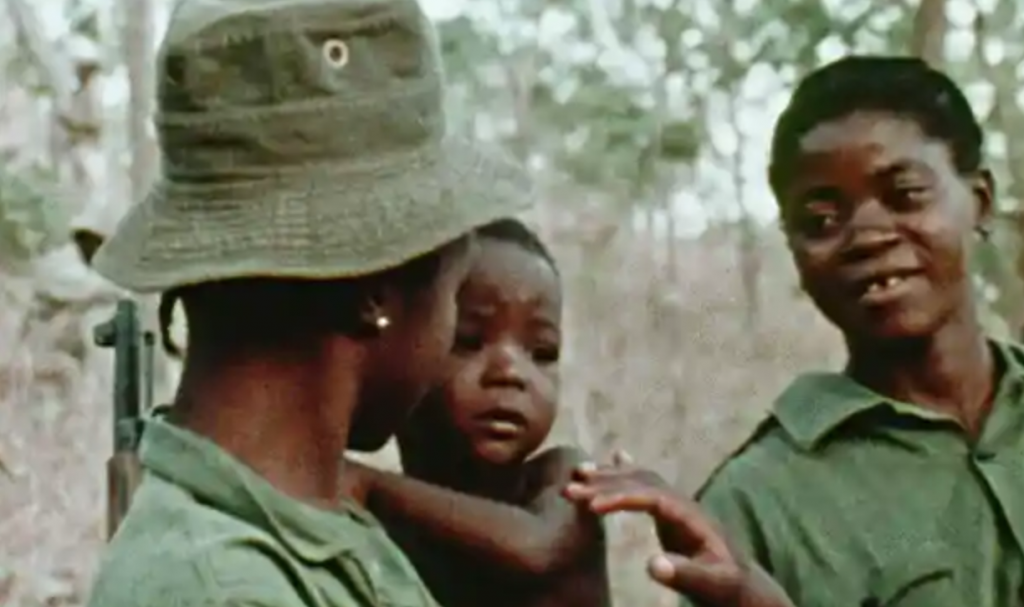
24. Concerning Violence — More manifesto than film, Göran Hugo Olsson’s Concerning Violence is made up of text from Frantz Fanon’s The Wretched of the Earth read by Lauryn Hill, with footage and interviews juxtaposing colonizers in Africa with rarely seen footage of freedom fighters and leaders, including Amilcar Cabral and Thomas Sankara.
Further Viewing: Göran Hugo Olsson also directed Black Power Mixtape, using previously unseen archival footage from interviews with Black Power Movement leaders.

25. Ghost Hunting — Raed Andoni’s haunting 2017 film crosses between documentary and fiction, as Palestinians who have spent time in Israeli prisons collaborate on a film to dramatize their experience.
Further Viewing: Buthina Canaan Khoury’s 2005 film Women in Struggle is made up of interviews with four Palestinian women freedom fighters who all spent time in Israeli prisons. There are dozens of beautiful Palestinian anti-colonialist films. Some to start with include Elia Suleiman’s Divine Intervention, Dahna Abourahme’s Until When, and Amer Shomali and Paul Cowan’s The Wanted 18. There is also the archive of Palestinian revolutionary short films made from 1968–1982 by a film group founded by the Palestinian Liberation Organization (PLO). See also the list of available films on the Reel Palestine site and the PalestineFilm Institute (which is currently offering a new free film every week).

26. Bloody Sunday — Paul Greengrass (who later worked with Matt Damon on the Bourne films) had his breakthrough with this 2002 film, a brilliant drama that recreates, step-by-tragic-step, the Bloody Sunday massacre in Northern Ireland, using a cast drawn mostly from the affected communities.
Further Viewing: Northern Ireland is known for its solidarity with liberation movements — a solidarity born from experience. A whole list could be made just from Irish anti-colonialist cinema. Some highlights: Steve McQueen’s Hunger, Jim Sheridan’s In The Name of The Father, Terry George’s Some Mother’s Son, and Ken Loach’s The Wind That Shakes the Barley.

27. Free Angela and All Political Prisoners — As the title suggests, Shola Lynch’s 2012 documentary focuses on the trial and solidarity movement around Angela Davis (though less on the other political prisoners). A great movement history and victory to celebrate,
Further Viewing: Don’t miss Cointelpro 101, from The Freedom Archives, for a definitive history of the FBI’s illegal surveillance, disruption, and murder of activists.

28. Matewan — Race, religion and class struggle are at the center of prolific independent filmmaker John Sayles’ fifth and most powerful feature. Matewan, released in 1987, is based on the true story of a mining strike in 1920’s West Virginia and is anchored by stunning cinematography and acting. Sayles funds his independent films by working as a script doctor in Hollywood, and this film’s story and dialogue are among his best.
Further Viewing: All of Sayles’ 18 films are worth watching. He is a socially conscious filmmaker that tells stories of communities rather than individuals. Some of his best are Lone Star, Brother from Another Planet, Men With Guns, and City of Hope.
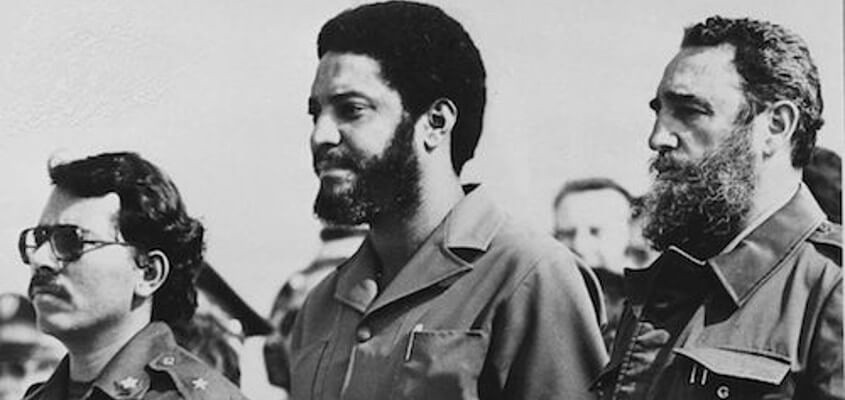
29. The House on Coco Road — Distributed by Ava DuVernay’s Array, Damani Baker’s 2016 film focuses on his mother’s path from growing up in rural Louisiana to organizing with Angela Davis in early 70’s Los Angeles, to traveling to Grenada to support Maurice Bishop’s revolutionary government.
Further Viewing: Nearly every film distributed by Ava DuVernay’s Array is political and remarkable, often directed by first time filmmakers of color. Check out the Array film series, which has been streaming a film roughly every week.

30. F.T.A. — Did you know that in 1972, a group of actors, musicians and comedians, including Jane Fonda, Donald Sutherland, and Paul Mooney, went on tour to perform shows near US military bases in the Pacific, encouraging soldiers to rise up and resist? The tour was called F.T.A., which took its title from an underground zine produced by soldiers that was called Fuck The Army. A newly restored copy of Director Francine Parker’s 1972 film was recently re-released, and it is an important document of a moment when Hollywood actors took real risks to oppose US imperialism.
Further Viewing: Another recently restored film from 1972, William Greaves’ Nationtime — Gary is a document of the National Black Political Convention held that year in Gary, Indiana. Meanwhile, on college campuses, many students were turning to more militant acts of resistance as well. Sam Green’s 2002 documentary The Weather Underground tells that story.
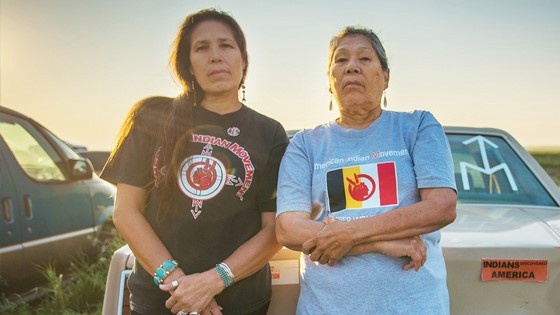
31. Warrior Women — Christina D. King and Elizabeth Castle’s 2018 documentary Warrior Women illuminates decades of Indigenous organizing through the life of Lakota activist, teacher and community leader Madonna Thunder Hawk, an American Indian Movement (AIM) veteran. The film uses her story, and her daughter’s, to explore Native “boarding schools”, the occupation of Alcatraz and resistance at Standing Rock, and more.
Further Viewing: Elle-Máijá Tailfeathers and Kathleen Hepburn’s The Body Remembers When The World Broke Open (2019) is a new classic of Indigenous North American cinema.
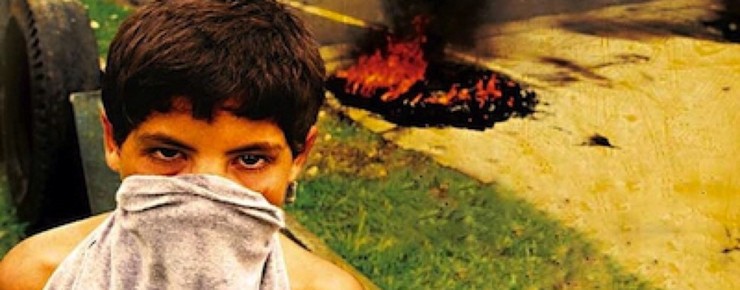
32. Fourth World War — Inspired by the words of Zapatista leader Subcommandante Marcos, Fourth World War (2003) traces and connects threads of resistance movements in Palestine, Mexico, Argentina, South Africa, South Korea, and New York. Richard Rowley and Jacqueline Soohen, also known as Big Noise Films, connect scenes of resistance into a poetic story of a global struggle against capitalism.
Further Viewing: Richard Rowley and Jacqueline Soohen have been making movement documentaries for over twenty years, from 1999’s Zapatista to last year’s 16 shots, about the murder of Laquan McDonald and coverup committed by the Chicago police.
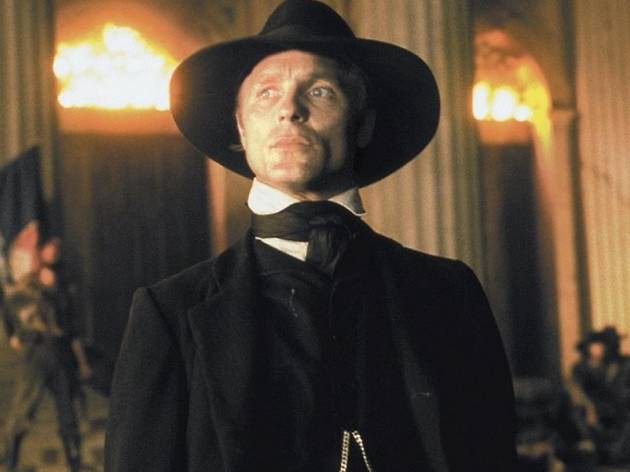
33. Walker — Director Alex Cox wanted to support the Sandinista government in its struggle against the US-funded Contra war. So he got Hollywood to give him 6 million dollars, and spent nearly all of it in Nicaragua, on a film that would economically and politically support the country. Walker (1987) is an experimental satire, simultaneously about William Walker (played by Ed Harris), an American who invaded and made himself president of Nicaragua, and about the then-current Contra war.
Further Viewing: Alex Cox never wore his politics as openly as in this film, but his films Repo Man and Sid and Nancy are cult classics. Battle of Algiers filmmaker Gillo Pontecorvo’s 1969 film Burn!, starring Marlon Brando, is also about Walker.

34. Rebellion in Patagonia — Did you know about the anarchist uprising in the Patagonia region of Argentina in the early 1920’s? The first half of Héctor Olivera’s 1974 drama is an exciting portrait of a movement of peasants fighting bosses and winning. Spoiler alert: If you don’t want to be depressed, you may want to skip the second half.
Further Viewing: Olivera’s 1986 Night of the Pencils is a drama based on the story of student activists abducted in 1976 by the military dictatorship.

35. Libertarias — The story of women soldiers who fought in the Spanish Civil War is an important and inspiring history of feminist resistance to the rising tide of 1930’s fascism. The politics of Vicente Aranda’s 1996 drama have not always aged well (like the scene of women soldiers “saving” sex workers), but it is an entertaining and moving story of women anarchists fighting both patriarchy and fascism.
Further Viewing: For more anti-patriarchal violence, Marleen Gorris’ A Question of Silence(1982) is a Dutch feminist drama about a group of women who spontaneously kill a random man because they are fed up with society’s sexism.
Jordan Flaherty: Journalist, producer, author of No More Heroes: Grassroots Challenges to the Savior Mentality. See more at jordanflaherty.org.
